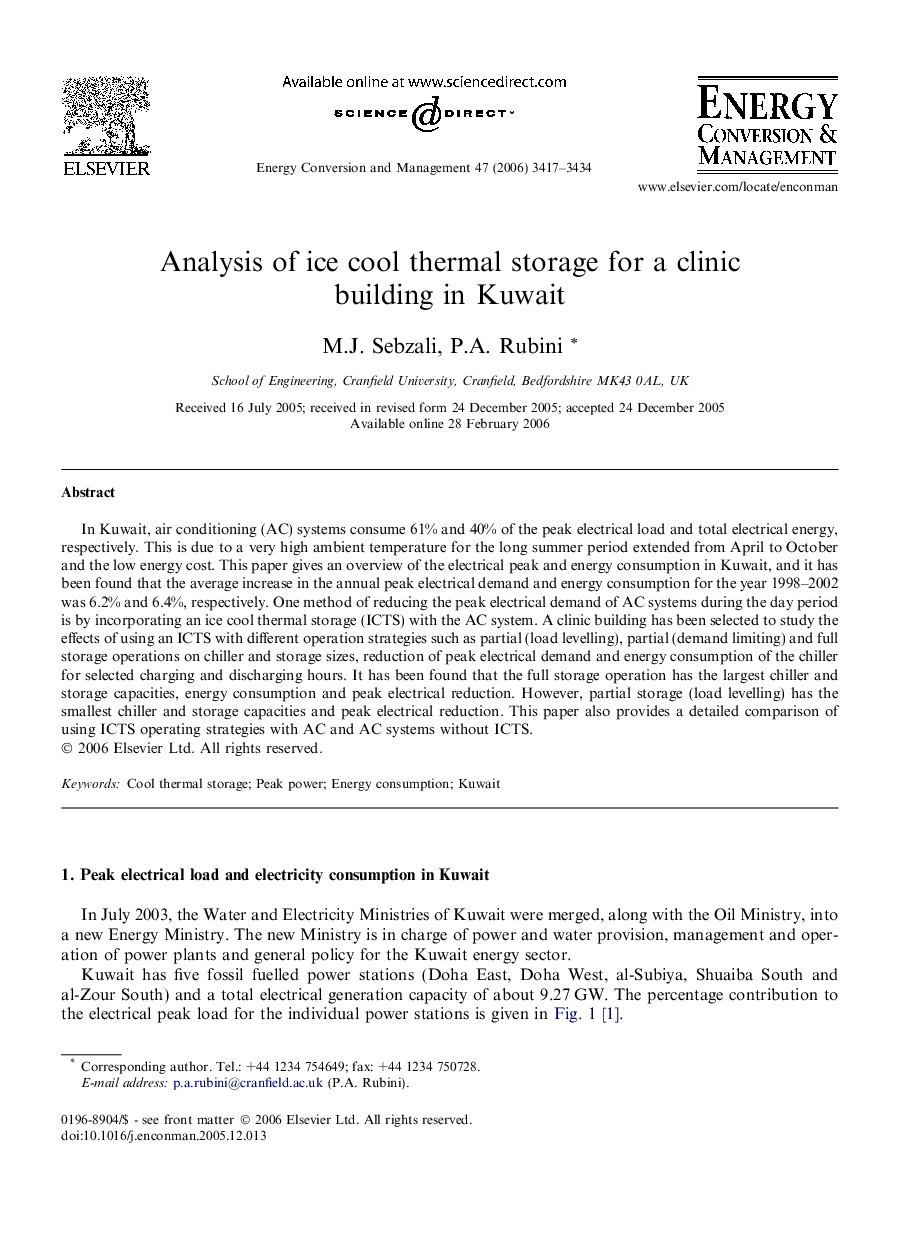| Article ID | Journal | Published Year | Pages | File Type |
|---|---|---|---|---|
| 762276 | Energy Conversion and Management | 2006 | 18 Pages |
In Kuwait, air conditioning (AC) systems consume 61% and 40% of the peak electrical load and total electrical energy, respectively. This is due to a very high ambient temperature for the long summer period extended from April to October and the low energy cost. This paper gives an overview of the electrical peak and energy consumption in Kuwait, and it has been found that the average increase in the annual peak electrical demand and energy consumption for the year 1998–2002 was 6.2% and 6.4%, respectively. One method of reducing the peak electrical demand of AC systems during the day period is by incorporating an ice cool thermal storage (ICTS) with the AC system. A clinic building has been selected to study the effects of using an ICTS with different operation strategies such as partial (load levelling), partial (demand limiting) and full storage operations on chiller and storage sizes, reduction of peak electrical demand and energy consumption of the chiller for selected charging and discharging hours. It has been found that the full storage operation has the largest chiller and storage capacities, energy consumption and peak electrical reduction. However, partial storage (load levelling) has the smallest chiller and storage capacities and peak electrical reduction. This paper also provides a detailed comparison of using ICTS operating strategies with AC and AC systems without ICTS.
